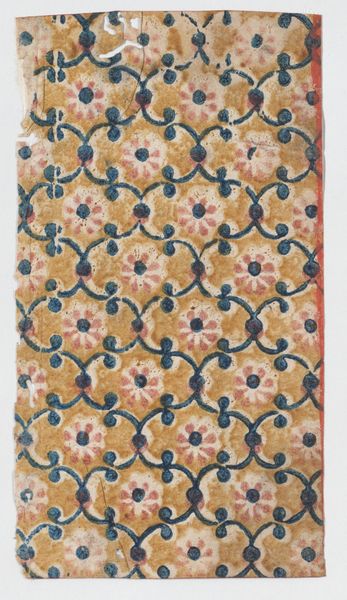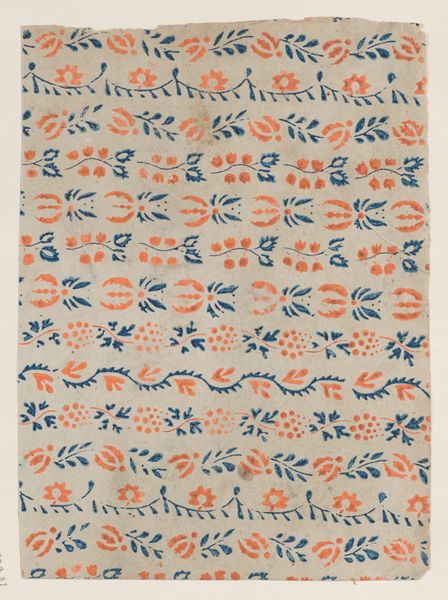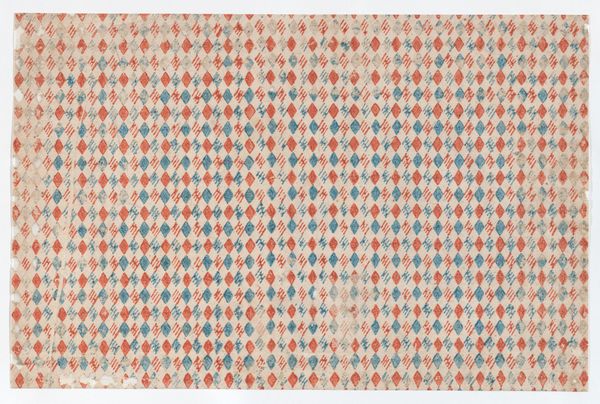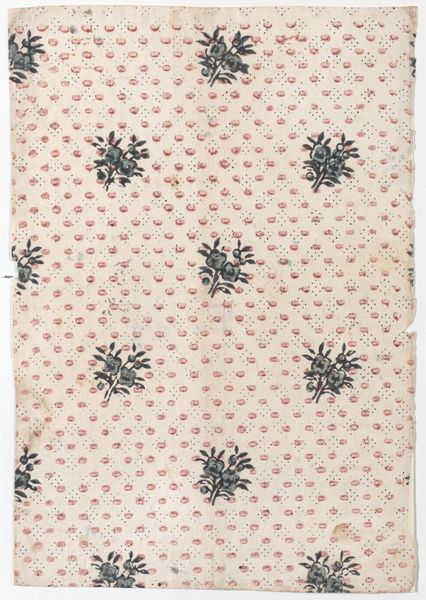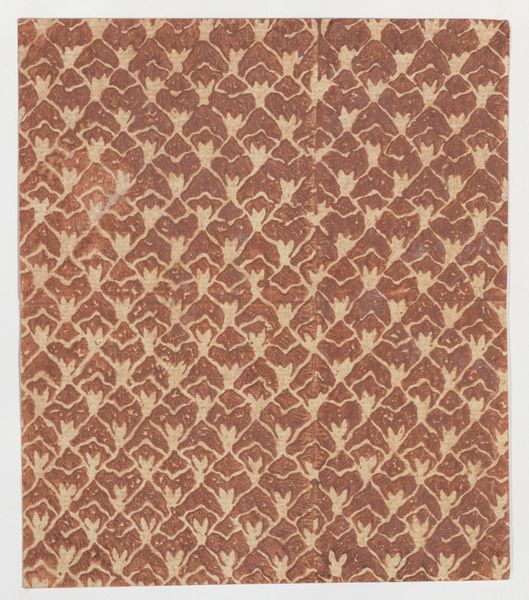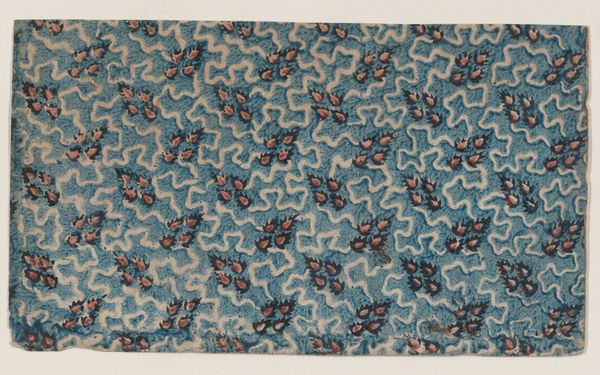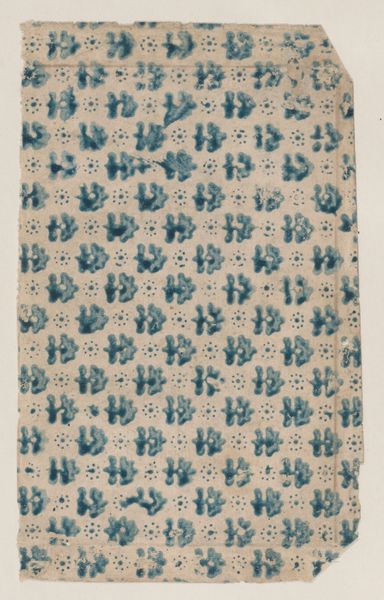
Sheet with an overall pattern of organic shapes 1800 - 1900
0:00
0:00
drawing
#
drawing
#
organic
#
organic pattern
Dimensions: Sheet: 6 3/4 × 4 7/16 in. (17.1 × 11.2 cm)
Copyright: Public Domain
Editor: We're looking at a piece called "Sheet with an overall pattern of organic shapes," created anonymously sometime between 1800 and 1900. It looks like a print, perhaps for textiles, with these really interesting blue and red motifs. I’m immediately drawn to how repetitive, almost hypnotic, the pattern is. How would you interpret this work, focusing on its formal qualities? Curator: Indeed, the repetitive nature is key. Notice the interplay of positive and negative space created by the organic forms. The blue shapes, contained within what appears to be hand-drawn, meandering red lines, establish a strong visual rhythm. The density and even distribution across the sheet speak to a concern for surface articulation, denying any hierarchy within the composition. It begs the question: does the lack of focal point amplify the aesthetic experience of pure form? Editor: I see what you mean about the rhythm. The blue shapes remind me a bit of microorganisms, and the red lines like connective tissue. Are you saying that by avoiding a focal point, the artist is directing us to focus on the raw structure itself? Curator: Precisely. This prioritisation of visual structure, line, color, and the distribution of form suggests an emphasis on the artwork as a self-contained system. Think of structuralist principles; the meaning isn’t necessarily ‘out there’ in the world, but constructed within the relationship between elements. Editor: That’s fascinating. I was so quick to jump to thinking about potential uses, like textile design. I never considered looking inward at its own system. Curator: It's easy to get caught up in potential applications. But a formalist lens helps us see past function to appreciate the pure visual impact and the sophisticated manipulation of artistic elements. Editor: I understand much better now the value of focusing on inherent structure and how a lack of focus could, in itself, BE the point! Thanks for offering your insights.
Comments
No comments
Be the first to comment and join the conversation on the ultimate creative platform.


